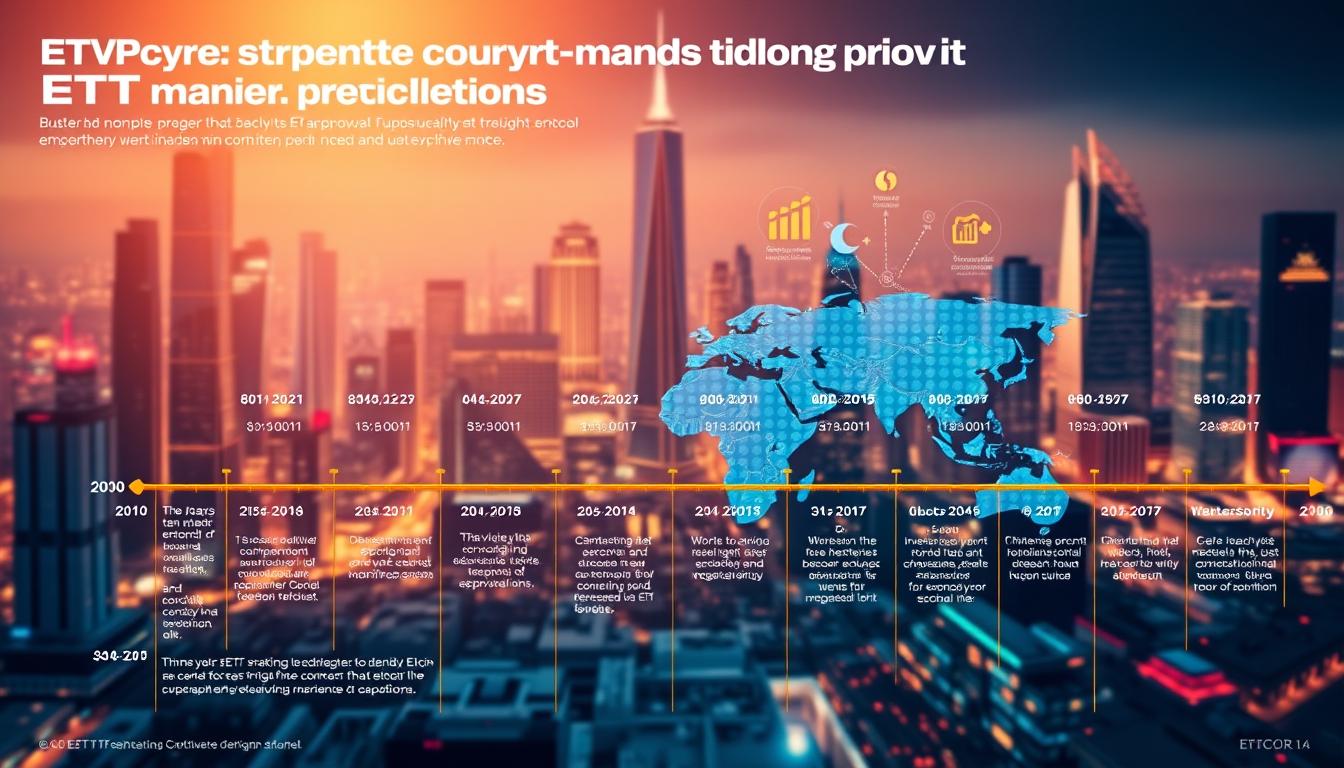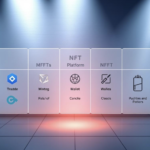Now Reading: Cryptocurrency ETF Approval Timeline Predictions Explained
- 01
Cryptocurrency ETF Approval Timeline Predictions Explained
Cryptocurrency ETF Approval Timeline Predictions Explained

Purpose: This report clarifies how new SEC pathways could shrink review windows for qualifying products from months to just 75 days. It outlines what that change means for issuers, the market, and investors.
Two tracks matter: the legacy 19b-4 route with a 21‑day comment phase, a 45‑day initial decision and extensions up to 240 days, versus a new generic path that can push eligible filings into a 75‑day review.
Why this clarity matters: issuers plan S‑1 timing, DTCC listings, and marketing. Traders watch liquidity and spreads when a fund lists. The first U.S. spot XRPR fund launched Sept. 18, 2025 and traded $37.7 million day one, showing volume can be large even if price moves vary.
What to expect next: clustering of decisions in October 2025, a backlog of 90+ pending filings across 24 tokens, and variability — only vehicles that meet the standardized tests will get the faster path. This guide walks through the SEC framework, eligibility tests, and practical signals to watch.
What the fast-track era means for crypto ETFs in the United States
A move to rule-based listings changes the rhythm of launches and liquidity formation. The securities exchange commission’s shift to generic standards (effective Sept. 17, 2025) replaces case-by-case review with predictable rules that can compress decision windows to about 75 days for qualifying filings.

Why timelines matter for investors and markets: tighter windows can concentrate approvals, which may spark early liquidity and narrower spreads. That speed affects whether funds reach critical mass quickly in secondary markets and how market makers and authorized participants prepare.
Product scope will broaden in this wave. Expect spot-based single-asset funds, futures-based strategies, and diversified index vehicles that hold several digital asset tokens. Hashdex’s NCIQ adding XRP and Solana shows how bundled exposure can smooth idiosyncratic risk and widen institutional access.
Operational prep matters as much as launch dates. Faster greenlights change seeding plans, exchange onboarding, and compliance workflows across U.S. securities exchange venues.
- Portfolio note: easier access does not replace disciplined sizing and risk controls in a new asset class.
- Adoption hinge: reliable operations, transparent holdings, and a credible use case will drive true demand.
In short, the fast-track design could help markets price-in events more cleanly and give investors clearer signals as this wave of products arrives.
Inside the SEC’s new framework: from 19b-4 to 75-day generic listing standards
This framework replaces case-by-case uncertainty with clear gates that exchanges and issuers can plan around.
The legacy 19b-4 process for a u.s. securities exchange starts with a 21-day public comment window and an initial 45-day SEC decision period. Extensions are possible and can stretch reviews to as long as 240 months days.
For current etf applications tied to the rule-change, the initial decision date is Sept. 13 and the outer final date is March 27, 2026. That anchors how long some filings may stay in review under the old path.

Standardized criteria from major exchanges
- Intermarket surveillance linkages via ISG for cross-market visibility.
- At least six months of trading in CFTC-regulated futures on a designated contract market.
- An existing ETF with ≥40% NAV exposure to the digital asset.
Effective Sept. 17, 2025, qualifying products can follow generic listing standards and move through review in about 75 days. Sponsors still must coordinate S-1 effectiveness and operational readiness.
Trading, liquidity, and surveillance remain central controls. The clarity act discussion and SEC quantitative screens could further shape how markets apply these standards.
Core eligibility criteria shaping approval timelines
Clear, measurable gates now determine which tokens move faster through listing reviews. The exchange commission ties speed to objective market signals so issuers can plan around concrete tests.

ISG-linked trading visibility and surveillance sharing
Intermarket Surveillance Group (ISG) links member venues so exchanges gain line-of-sight across trading venues. That visibility helps spot manipulation and abnormal patterns quickly.
Shared surveillance agreements let markets combine feeds and alerts, improving detection and making faster reviews safer.
Six months of CFTC-regulated futures on a designated contract market
Proof of six months of futures trading shows continuity and depth. Under CFTC oversight, these markets create high-quality data for surveillance.
When futures seasoning exists, exchanges can rely on rich trade history and active surveillance-sharing to reduce review friction.
≥40% NAV exposure via an existing ETF listed on a national securities exchange
The initial-only ≥40% NAV test assumes an existing listed vehicle concentrates exposure to the asset. That concentration signals mature infrastructure and custody practices.
Together, any one of these conditions creates multiple on-ramps. Tokens without ISG spot links can still qualify through futures seasoning or structural exposure, widening access without weakening safeguards.
Bottom line: robust surveillance, consistent trading history, and clear structural exposure tie accelerated review speed to verifiable market quality. These criteria interact with S-1 readiness and disclosures to form a predictable path for compliant issuers — a framework the clarity act could reinforce further.
Which tokens are likely next: qualifying assets and near-qualifiers
Issuers and market makers are tracking a short roster of tokens that clear the six‑month DCM hurdle. These names stand out because they meet objective seasoning and give exchanges the surveillance data needed for faster reviews.

Currently meeting the fast-track criteria are DOGE, BCH, LTC, LINK, XLM, AVAX, SHIB, DOT, SOL, and HBAR. This group spans payments-focused coins, smart-contract platforms, and major utility networks, showing breadth in eligible assets.
Not every qualifying token has active etf applications. Timing matters: sponsors may need to refresh filings or align S-1 readiness to hit the compressed review window.
On deck after seasoning
ADA and XRP are near-qualifiers. Once each crosses the six months mark on a designated contract market, they could also move into faster review tracks.
- Market differences: liquidity, custody support, and index inclusion vary by token and shape post-listing flows.
- Multiple paths help: tokens with both futures seasoning and existing product exposure often draw clustered approvals.
- Sponsor priorities: issuers favor assets with clear institutional use and hedging efficiency to boost demand durability.
| Token | Futures Seasoning | Etf Applications Status | Market Notes |
|---|---|---|---|
| DOGE | 6+ months | Filed | High retail interest; active regulated futures |
| LINK | 6+ months | Filed | Oracle use case; steady liquidity |
| ADA | Seasoning in Sept/Oct | Filed / near | Smart-contract depth; custody improving |
| XRP | Seasoning in Sept/Oct | Filed | Payments focus; institutional interest rising |
Bottom line: crypto etfs tied to these tokens are likely to lead early because the data and venue links reduce friction. Watch filings, seeding plans, and market-making setups to spot when approvals cluster.
For context on how regulators are streamlining reviews, see the recent coverage on the rule change regulator streamlines approvals.
Cryptocurrency ETF approval timeline predictions
Markets are positioning for a concentrated wave of listings once several 75‑day clocks finish in early October. Analysts expect October 2025 to host a near-term cluster as more than 90 filings covering 24 tokens clear the new pathway.
Near-term clusters: October 2025 launch window and backlog clearing
Base case: many issuers that timed S-1 effectiveness and DTCC readiness will flip live quickly when 75‑day reviews close. Those that lag may need to re-file or extend roadshows, pushing their launches later.
Early data show first-day demand can be meaningful: REX‑Osprey XRPR posted $37.7M in day‑one trading volume and Dogecoin’s debut saw about $17M. Volume often normalizes in week one as market makers tighten spreads.
Outer bounds: maximum decision dates running into March 27, 2026
The legacy 19b-4 track still exists. Filings on that path can stretch to March 27, 2026, which serves as the longstop for stragglers and backlog carry‑over into Q1 2026.
Signals to watch: S-1 readiness, DTCC listings, and issuer re-filings
Practical signals include SEC posting updates, S‑1 amendments, DTCC eligibility entries (some tickers like Solana are already listed), and issuer roadshows. These are the clearest operational clues that a launch is imminent.
- Seasoning: six months of futures trading drives waves of eligibility for near-qualifiers.
- Sequencing: tokens with multiple pathways and strong custody often lead the queue.
- Backlog: expect follow-on launches in late Q4 2025 and early Q1 2026.
| Signal | Why it matters | Typical lead time |
|---|---|---|
| S‑1 effectiveness | Regulatory readiness to list | Days–weeks |
| DTCC listing | Clears settlement and ticker use | Days |
| SEC posting / amendments | Indicates staff feedback resolved | Days–weeks |
Final note: these forecasts are probabilistic. Track filings, operational readiness, and early volume patterns to read the market as approvals cluster and launches proceed.
Market reactions so far: volume, flows, and investor appetite
Early trading shows clear appetite across launch types, from single-asset listings to diversified baskets. REX-Osprey XRPR posted $37.7M in day-one activity, the largest first-day figure for a related product in 2025. The Dogecoin etf opened with about $17M, signaling broad retail and institutional engagement.
XRP’s debut and quick conversions
The rex-osprey xrp etf headline number for xrp made headlines and pulled attention to fast sponsor moves. Grayscale also converted a private fund to a public fund in under 48 hours, showing sponsors can accelerate under the new framework.
Diversified funds and flow patterns
Hashdex’s NCIQ added xrp (6.93%) and Solana (4.11%), proving that some funds capture market breadth rather than single-asset exposure. Early spreads compressed as market makers and authorized participants calibrated hedges in futures and spot venues.
- Short-term: first-week trading often sets the tone for secondary liquidity.
- Medium-term: sustained flows depend on narrative durability and fee competition among etfs.
| Product | First-day trading | Note |
|---|---|---|
| REX‑Osprey XRPR | $37.7M | Strong initial demand |
| Dogecoin fund | $17M | High retail interest |
| Hashdex NCIQ | — | Multi-asset allocations: XRP 6.93%, SOL 4.11% |
Bottom line: early indicators point to a receptive market for multiple vehicles, but sustained flows will track macro mood, custody confidence, and advisor adoption.
Quantitative screens and policy overlays that could compress timelines
Exchanges are preparing quantitative gates that steer faster reviews toward liquid, well‑capitalized tokens. Proposed follow‑on rules would layer measurable market tests onto the generic listing standards to favor assets with deep trading depth and operational readiness.
Proposed metrics: trading volume, liquidity, and float-adjusted market cap
Industry comments suggested bright‑line thresholds — for example, a $500M minimum market cap and roughly $50M average daily trading volume with a U.S. venue share.
Those screens could filter thin names and let staff focus reviews on established digital assets that show real-world liquidity and creation/redemption efficiency.
CLARITY Act overlays: decentralization, governance, custody
The CLARITY Act debate could add decentralization and custody tests to the process. Policymakers are weighing validator dispersion, governance caps, open‑source disclosure, and custody standards as inputs to exchange review.
| Criterion | Why it matters | Effect on process |
|---|---|---|
| Market cap & ADV | Shows scale and resilience | Speeds review for seasoned assets |
| Decentralization metrics | Limits central control risks | Aligns with investor protections |
| Custody & venue breadth | Operational readiness | Smooths listing operations |
Bottom line: a rules-based mix of quantitative screens and decentralization criteria — plus six months of history where applicable — can make outcomes faster and more predictable without weakening safeguards.
Risks to timeline accuracy and price impact assumptions
Near-term calendar moves carry real risks: market runs often price in outcomes long before staff posts a final notice. That creates a classic buy the rumor, sell the news case where the actual day performs below expectations.
“Buy the rumor, sell the news”: when approvals are already priced in
Some tokens rallied heavily ahead of listings. XRP climbed more than 400% in the year to late September 2025, then softened after its debut despite $37.7M in day-one trading.
Historical analogs offer mixed signals. Bitcoin rose further weeks after its January 2024 spot launches. Ethereum dipped for months after May 2024 decisions before later recovering.
Macro risk-off and cross-asset volatility affecting crypto ETFs
Macro risk-off can swamp launch-day dynamics. Broad sell-offs often mute flows even when a fund lists with tight spreads and good liquidity.
Execution and market-structure risks matter too: delayed S-1 effectiveness, late-stage comments from the exchange commission, custody limits, or weak creation/redemption mechanics can push live dates or widen trading spreads.
- Remember: timing is an input, not a guarantee of sustained flows.
- Scenario planning: model waves of approvals, slippage on some filings, and macro-driven compression of demand.
- Allocation: favor measured sizing and continuous monitoring in this new asset class.
| Risk | How it shows up | Typical effect | Mitigation |
|---|---|---|---|
| Priced-in run-ups | High pre-listing inflows | Muted or negative day-one returns | Staggered entries; rebalancing |
| Macro risk-off | Cross-asset volatility | Lower net flows; wider spreads | Hedge exposure; liquidity buffers |
| Execution delays | S-1 or exchange comments | Launch slips; issuer re-filings | Monitor filings; readiness checks |
| Market structure limits | Custody/creation gaps | Poor tracking; volatile trading | Due diligence on providers |
Bottom line: expressly disclaims liability for outcomes, but prudent expectations, diversified exposure, and active monitoring best defend against overconfidence in calendar-based cases. Treat approval timing as one input among many when sizing positions and planning execution.
How investors can track the process and prepare
Watch operational signals, not headlines. S‑1 amendments, DTCC postings, and exchange ticker entries usually foreshadow when listings hit secondary markets.
Practical steps:
- Monitor the SEC docket and etf applications status for S‑1 changes and staff comments.
- Check DTCC eligibility and ticker postings on a u.s. securities exchange to confirm back‑office readiness.
- Follow issuer updates on seeding, lead market makers, and creation/redemption mechanics to gauge initial trading quality.
Build watchlists that include diversified digital assets index funds and targeted single‑asset plays. Read prospectuses for custody, valuation methods, and benchmark construction before allocating capital.
Adopt a staged entry plan: size initial positions small, then scale after spreads and volumes stabilize. Be mindful that early trading can be volatile; use limit orders and track net asset value as funds settle into routine operations.
| Signal | Where to check | Why it matters |
|---|---|---|
| S‑1 amendments | SEC docket / EDGAR | Shows regulatory readiness and unresolved comments |
| DTCC listing | DTCC / exchange tickers | Clears settlement and ticker use for trading |
| Issuer seeding & MM notes | Issuer releases / prospectus | Influences spreads and creation liquidity |
| Platform & advisor approvals | Brokerage listings | Affects actual access and distribution |
Context: over 90 pending filings covering 24 tokens and diversified index funds mean clustered launches are likely. Rapid conversions to public vehicles by Grayscale and Hashdex’s expansion show operational momentum as the 75‑day regime beds in.
For deeper technical context on the fast‑track path, see the digital asset etfs fast-track analysis. Stay diversified, document your process, and keep position sizes aligned with your risk plan as market adoption evolves.
Conclusion
The clarity act and exchange-led rules together steer the digital asset market toward a rules-based, sustainable era for funds. Standardized gates, six months of futures seasoning, and stronger surveillance mean sponsors can plan launches with more certainty.
ETFs approvals will likely come in waves as eligibility, operations, and market signals align. The securities exchange commission’s framework links faster review to objective safeguards, improving investor protections while letting seasoned assets move quicker.
Operational excellence — custody, pricing, and creation/redemption mechanics — will determine which funds capture the first surge of flows. Treat calendar forecasts as guidance, not guarantees, and keep tracking etf applications, trading volume, and seasoning milestones to stay ready.
Bottom line: durable structures, clearer rules, and better transparency are now part of the market’s next chapter. This shift can support long-term use and measured adoption of cryptocurrency exposure while the industry matures.
FAQ
What does the fast-track era mean for crypto ETFs in the United States?
The fast-track era shortens review from legacy 240-day maximums to a potential 75-day decision window for products that meet standardized criteria. That speeds issuer timelines, reduces regulatory uncertainty and can bring more spot and futures funds to market sooner, increasing investor access and trading volume.
Why do timelines matter for investors and markets?
Timelines shape price discovery and positioning. Faster decisions reduce the chance that approvals are fully priced in before listings, can spur capital flows and affect market volatility. They also change issuer strategy on filings, marketing and seed capital commitments.
What types of products are covered under the new framework?
The scope includes spot listings, futures-based funds and diversified exchange-traded funds that meet specific custody, surveillance and exposure thresholds. Products that link to existing listed funds or traded derivatives can more readily meet the expedited criteria.
How did the SEC’s legacy review path work?
Under the prior route, exchanges filed rule changes with the SEC under Section 19b-4, triggering initial 45-day comment windows and possible 240-day extensions. That process produced staggered decisions and longer uncertainty for issuers and investors.
What changes in September 2025 affect listing speed?
Beginning in September 2025, qualifying funds submitted under new generic listing standards may receive final review in 75 days. That shift aims to standardize and accelerate decision-making for products that meet surveillance and liquidity tests.
How have exchanges like Cboe BZX, Nasdaq and NYSE Arca contributed?
These exchanges proposed harmonized listing criteria that define surveillance-sharing obligations, market-quality thresholds and transparency rules. Their proposals form the backbone of the standardized review process that enables faster decisions.
What core eligibility criteria influence whether a product gets fast-tracked?
Key elements include ISG-linked surveillance or equivalent sharing, six months of CFTC-regulated futures trading on a designated contract market for the underlying asset, and minimum exposure via an ETF already listed on a national securities exchange, typically around 40% of NAV.
Why does six months of DCM-traded futures matter?
A six-month history on a designated contract market provides a regulated price reference and demonstrable liquidity. That track record helps the SEC assess market integrity and surveillance links, reducing perceived market-manipulation risk.
Which tokens currently meet the fast-track criteria?
Assets that broadly meet requirements include Dogecoin, Bitcoin Cash, Litecoin, Chainlink, Stellar, Avalanche, Shiba Inu, Polkadot, Solana and Hedera. These have established trading visibility, derivatives activity or existing ETF exposure that can satisfy standardized tests.
Which tokens are on deck after seasoning?
Cardano and XRP are examples that may cross the six-month DCM threshold soon. Once they meet the futures-history and other listing tests, issuers can pursue the expedited path and potential launch windows.
When are clustered launches likely to occur?
Near-term clusters are expected around October 2025 as issuers time filings to meet the new standard and clear backlogs. That window could produce multiple new listings if S-1 filings, DTCC readiness and issuer re-filings align.
What are the outer bounds for maximum decision dates?
For some filings, legacy clocks and extensions could push final decisions into early 2026, with March 27, 2026 cited as a practical outer bound for delayed cases. Exact dates depend on filing mechanics and whether products claim the expedited route.
What issuance signals should investors watch?
Monitor S-1 and S-3 filings, re-submissions, DTCC ticker preparations, and exchange rule-change notices. Public statements from major issuers about seeding and authorized participants also indicate readiness and likely launch timing.
How have markets reacted to recent launches and conversions?
Reactions vary by product. For example, a recent XRP fund debuted with significant first-day volume, and managers have converted or relaunched funds quickly after regulatory shifts. Demand for alternatives beyond bitcoin and ether has pushed flows into niche listings.
What quantitative screens could further compress review times?
Proposed generic listing standards include minimum trading volume, liquidity thresholds and float-adjusted market-cap screens. Products that meet these objective measures can demonstrate reduced market-manipulation risk and may qualify for faster processing.
Could legislation such as the CLARITY Act affect listings?
Yes. Laws that clarify decentralization, governance and custody thresholds could reshape custody and custody-provider requirements, potentially making more assets eligible for standardized listing and shortening approval windows.
What are the main risks to timeline accuracy and price-impact assumptions?
Risks include regulatory pushback, legal challenges, macro sell-offs and sudden volatility across asset classes. Many market moves reflect “buy the rumor, sell the news,” meaning approvals may already be priced in and actual listings could have muted or opposite effects.
How can investors track the process and prepare?
Follow SEC filings, exchange rule notices, issuer press releases and DTCC ticker activity. Keep an eye on fund prospectuses for seed capital plans and redemption mechanics. Using reputable custodians and diversified allocation strategies can reduce operational risk.












